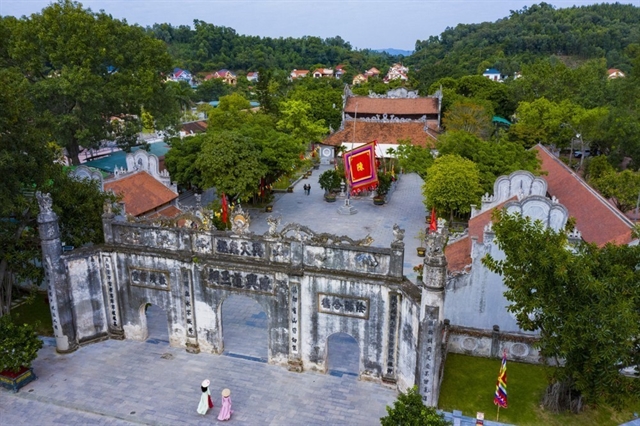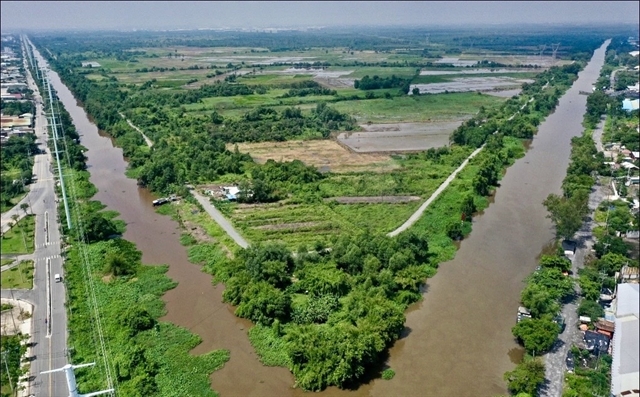 Sunday/Weekend
Sunday/Weekend

 |
| HISTORIC SITE: The overview of the Safety Zone in Định Hóa Commune in the northern province of Thái Nguyên. Photo courtesy of the People's Committee of Định Hóa Commune |
By Lương Thu Hương
Historical landmarks nationwide are attracting multiple visitors who wish to pay tribute to the fallen heroes and learn about the nation's history ahead of the anniversary of the founding of the Vietnam People’s Army (December 22, 1944).
One such must-see destination is the Safety Zone in Định Hóa Commune in the northern province of Thái Nguyên.
In the commune 76 years ago, the then President Hồ Chí Minh, along with the Communist Party and the new government of independent Việt Nam, established the Safety Zone, or An Toàn Khu (ATK) in Vietnamese, for housing the leadership of the war of resistance against the return of the French colonialists.
Embarking on a journey to the historical relic sites within the zone, tourists are transported back in time, immersing themselves in a glimpse of the nation's history.
The first impression upon setting foot in the former Định Hóa Safety Zone is the tranquillity and fresh atmosphere of a half-mountain half-plains area, where rolling hills and forests intertwine with crop fields, streams, and the peaceful villages of the Tày ethnic community. The Chợ Chu Valley is embraced by towering mountain ranges, resembling steadfast fortresses.
When President Hồ arrived there on May 20, 1947, he recognised the advantages of the terrain for covert military operations. He said, “With good people and a good political foundation, we can advance when it is feasible and retreat if necessary."
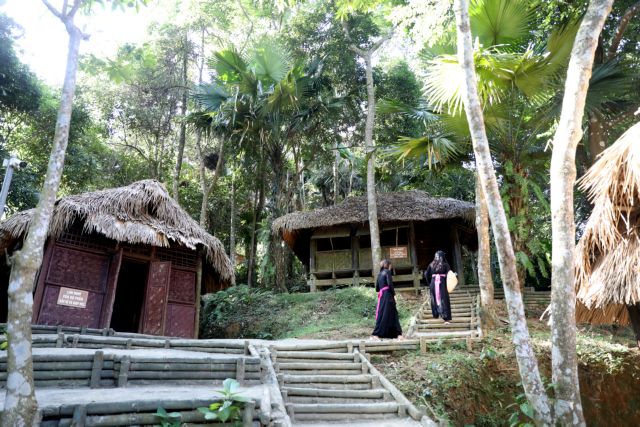 |
| LEADER'S DIGS: Tourists visit relics of President Hồ Chí Minh's shack located on Tỉn Keo Hill. VNS Photo Đoàn Tùng |
When choosing Tỉn Keo Hill in Nà Lọm Village as the base, President Hồ said, "Above, there are mountains; below, there are rivers. We have land to cultivate and open spaces to enjoy. The houses of government staff are spacious, clean, and well-protected, close to the local people but away from the main roads."
As the hub of the Safety Zone for the offices of the central government and the Party Central Committee, ATK Định Hóa witnessed important decisions made by President Hồ. These included strategic military campaigns such as the Việt Bắc counteroffensive, Northeast and Northwest campaigns, the Border campaign, and approving the battle plan and initiating the historic Điện Biên Phủ campaign.
The historical value of the ATK Định Hóa relic site was announced by the state as a Special National Historical Relic site in May 2012.
According to Nguyễn Khánh Ly, a tour guide at the site, after the National Resistance Day on December 19, 1946, Định Hóa District, along with Đại Từ and Phú Lương districts (in Thái Nguyên Province), Chợ Đồn and Chợ Mới districts (in Bắc Kạn), and Sơn Dương and Chiêm Hóa districts (in Tuyên Quang), became the Central Safety Zone within the Việt Bắc resistance base. Among these, Định Hóa was considered the 'capital city' of the resistance government.
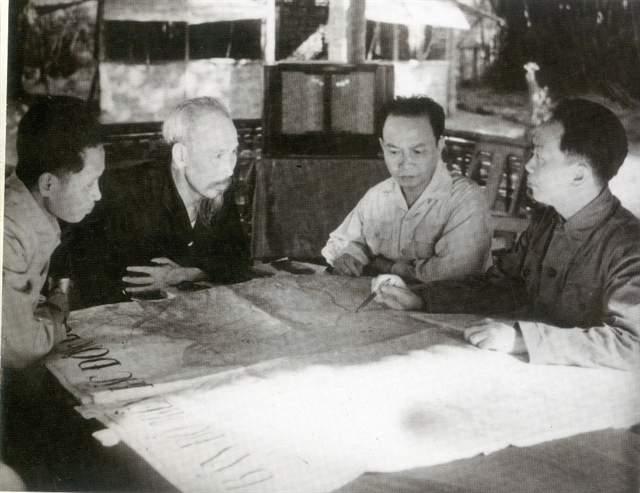 |
| BATTLE PLANNING: At the Định Hóa Safety Zone, President Hồ Chí Minh (2nd left) and other Vietnamese leaders including Phạm Văn Đồng (1st left), Trường Chinh (2nd right) and General Võ Nguyên Giáp decided to launch the historic Điện Biên Phủ Campaign. Photo courtesy of Vietnam National Museum of History |
Twenty among hundreds of historical relic sites in the Safety Zone recognised as National Relics were closely associated with the images of President Hồ and other high-ranking party and government leaders during the arduous resistance war years, such as Khau Tý Hill, Tỉn Keo Hill, and Khuôn Tát Waterfalls.
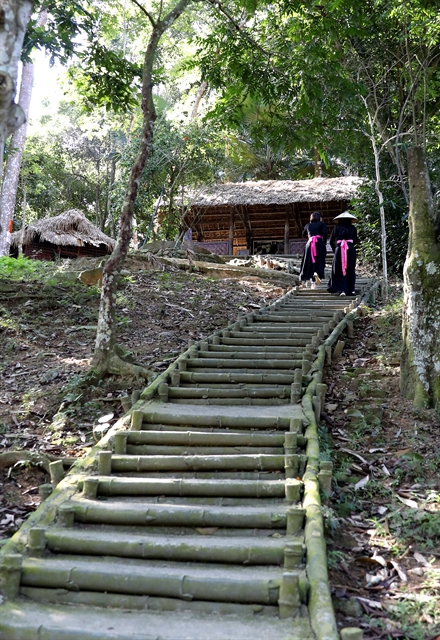 |
| The remaining relic of the 'Presidential Residence' of President Hồ with its immense historical significance was classified as a national historical relic site in 2006. VNS Photo Đoàn Tùng |
President Hồ's first residence in the Safety Zone was located in Nà Tra Hamlet, Điềm Mặc Commune on Khau Tý Hill. He lived and worked here until mid-October 1947 and then moved to the foot of the Hồng Mountain to continue leading the resistance to victory.
"The scenic landscape of the area inspired President Hồ to write his famous poem Cảnh Khuya. It describes a bright moonlit night in the Việt Bắc resistance zone in the early years of the anti-French war, thereby expressing his love for nature, sensitive soul, deep patriotism and optimistic attitude," Ly said.
"And it was also here that President Hồ wrote the book Improving the Way of Working under the pen name X.Y.Z and signed a decision to designate July 27, 1947 as the national War Martyrs and Invalids Day."
The remaining relic of the 'Presidential Residence' of President Hồ with its immense historical significance was classified as a national historical relic site in 2006.
The former Safety Zone enchants not only history enthusiasts but also nature lovers thanks to its pristine landscape and fresh atmosphere.
Tourists could visit De Pass and Hồng Mountain, which have become famous in poetry and history, or immerse themselves in the natural beauty of palm forests, tea hills, and especially, the magnificent seven-tier Khuôn Tát Waterfalls.
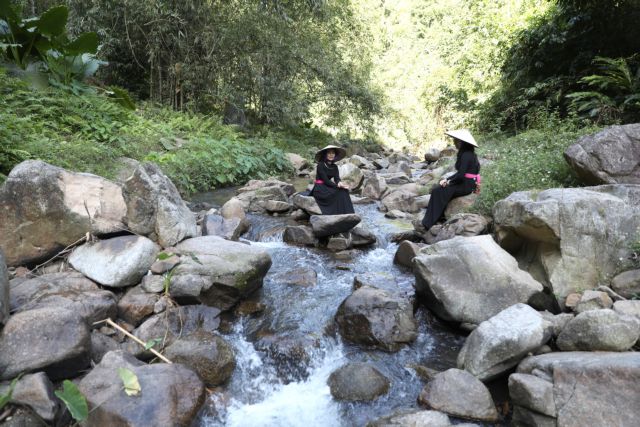 |
| IDYLLIC: The former Safety Zone enchants not only history enthusiasts but also nature lovers thanks to its pristine landscape and fresh atmosphere. VNS Photo Đoàn Tùng |
Tourism
In recent years, local authorities have been actively building plans to preserve, restore, and enhance the significant historical value of the special national historical relic site in Định Hoá in association with tourism development.
The former war zone has long been a historical relic site to educate young generations about patriotism, as well as a much-loved tourism destination.
It is located on a tourism route that encompasses various provinces in the northeastern region of Việt Nam, such as Lạng Sơn, Tuyên Quang, Cao Bằng, and Bắc Kạn.
The region offers diverse, rich, and unique experiences by combining historical tourism with ecological beauty, community-based activities, and ethnic cuisine.
"The promotion of the historical relics and scenic landscapes in Định Hóa Commune is one of the key tasks of Thái Nguyên Province's tourism development project," said Lê Ngọc Linh, deputy director of the Department of Culture, Sports, and Tourism of the province.
"We are focusing on upholding the meaning of our historical relics by integrating them with educational activities, in addition to developing community-based tourism to better serve tourists." VNS



